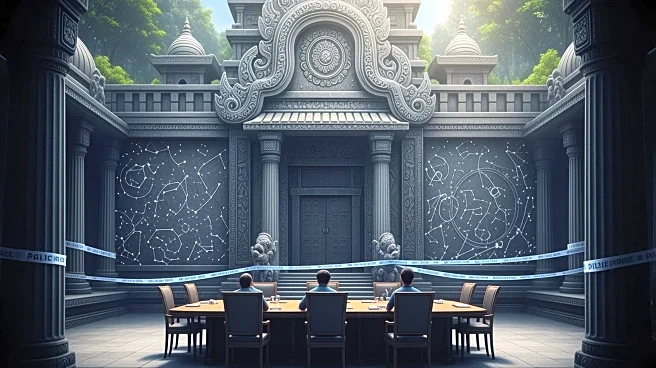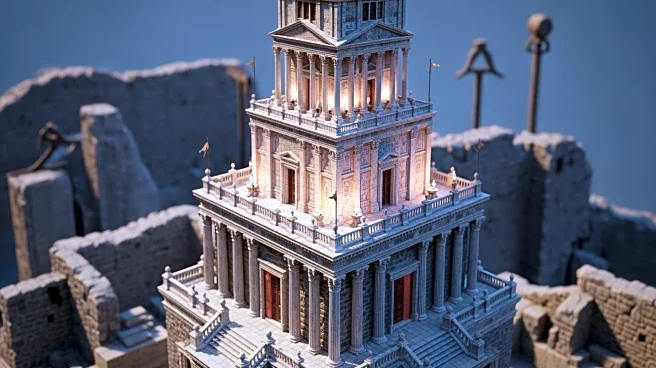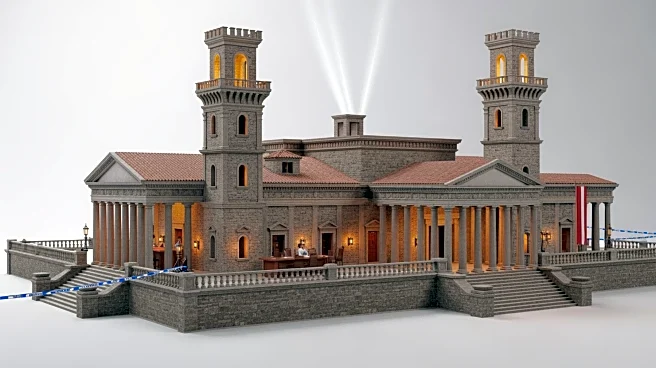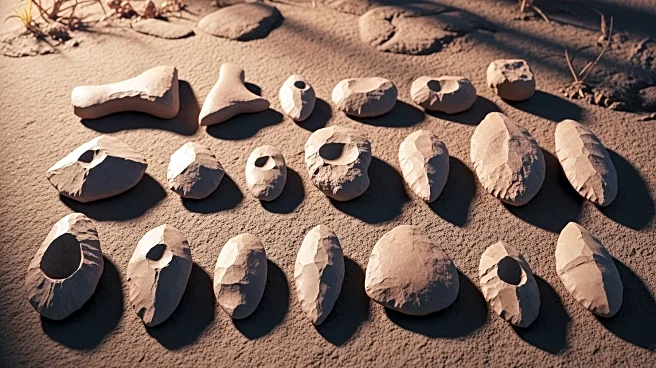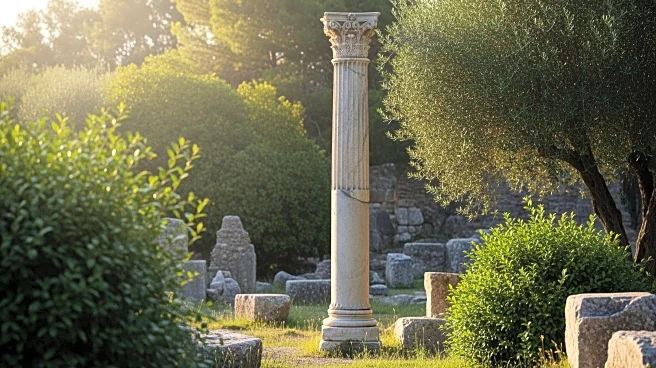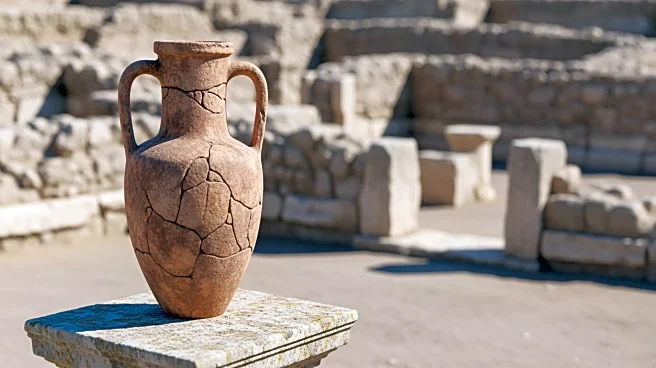What's Happening?
The Aguada Fénix site in southeastern Mexico, dating back 3,050 years, is the oldest and largest architectural site of the ancient Maya civilization. Recent research suggests the site was designed to represent
the cosmos, featuring crosses of increasing sizes and a cruciform pit containing ritual artifacts. The site was built during the beginnings of Maya civilization and used for around 300 years, reflecting the community's conception of the universe.
Why It's Important?
The discovery of Aguada Fénix offers valuable insights into the early Maya civilization and its cultural practices. It challenges previous assumptions about social hierarchy and suggests that large-scale construction projects could be achieved through collective action rather than coercion. The site's design reflects the Maya's understanding of the universe and their use of ritual calendars, offering a deeper understanding of their cosmology and societal organization.
What's Next?
Further research and excavation are needed to fully understand the significance of Aguada Fénix and its role in Maya society. Scholars are divided on the interpretation of the site as a cosmogram, highlighting the need for continued investigation and debate within the archaeological community.
Beyond the Headlines
The study of Aguada Fénix contributes to a broader reevaluation of Mesoamerican history, emphasizing collective action and cultural exchange over hierarchical structures. It also raises questions about the role of ritual and symbolism in ancient societies.



